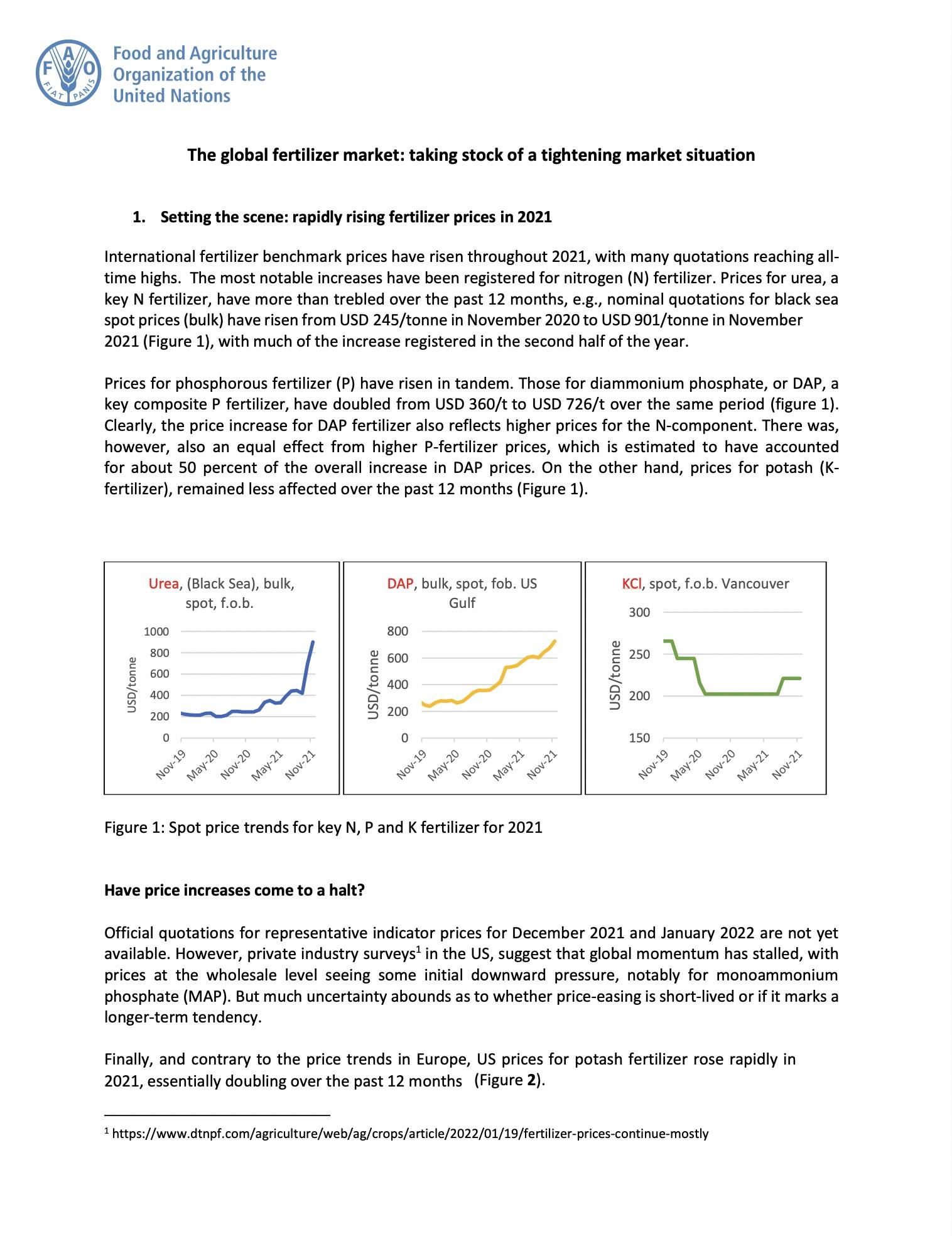
The global fertilizer market: taking stock of a tightening market situation
10/03/2022
International fertilizer benchmark prices have risen throughout 2021, with many quotations reaching all- time highs. The most notable increases have been registered for nitrogen (N) fertilizer. Prices for urea, a key N fertilizer, have more than trebled over the past 12 months, e.g., nominal quotations for black sea spot prices (bulk) have risen from USD 245/tonne in November 2020 to USD 901/tonne in November 2021 (Figure 1), with much of the increase registered in the second half of the year.
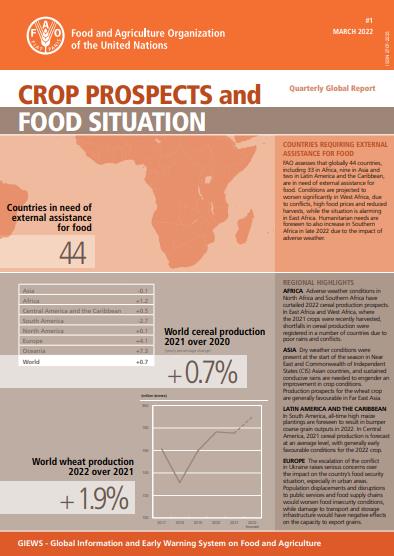
Crop Prospects and Food Situation - Quarterly Global Report, No. 1, March 2022
04/03/2022
FAO assesses that globally 44 countries, including 33 in Africa, nine in Asia and two in Latin America and the Caribbean, are in need of external assistance for food. Conditions are projected to worsen significantly in West Africa, due to conflicts, high food prices and reduced harvests, while the situation is alarming in East Africa. Humanitarian needs are foreseen to also increase in Southern Africa in late 2022 due to the impact of adverse weather.
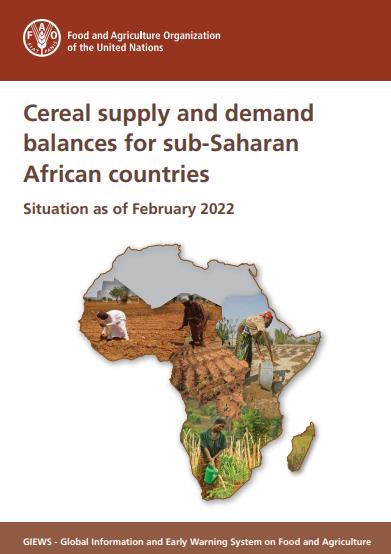
Cereal supply and demand balance for sub-Saharan African countries No. 1, February 2022
04/03/2022
This statistical report contains a subset of CCBS data and presents updated cereal supply and demand balances for all sub-Saharan African countries. It complements the information of the FAO/GIEWS Crop Prospects and Food Situation report and is published four times a year with the same schedule. This report is based on information available as of February 2022.
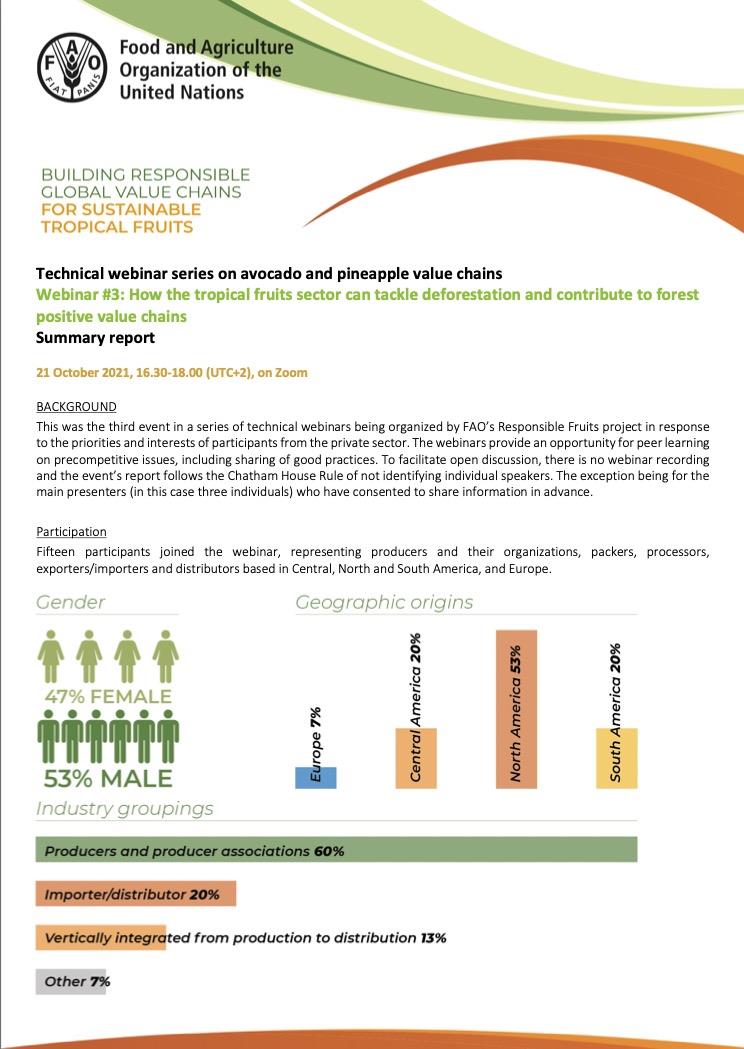
Webinar #3: How the tropical fruits sector can tackle deforestation and contribute to forest positive value chains -21 October 2021
04/03/2022
This was the third in a series of technical webinars being organized by FAO’s Responsible Fruits project in response to the priorities and interests of participants from the private sector. The webinars will provide an opportunity for peer learning on precompetitive issues, and the identification and sharing of good practices
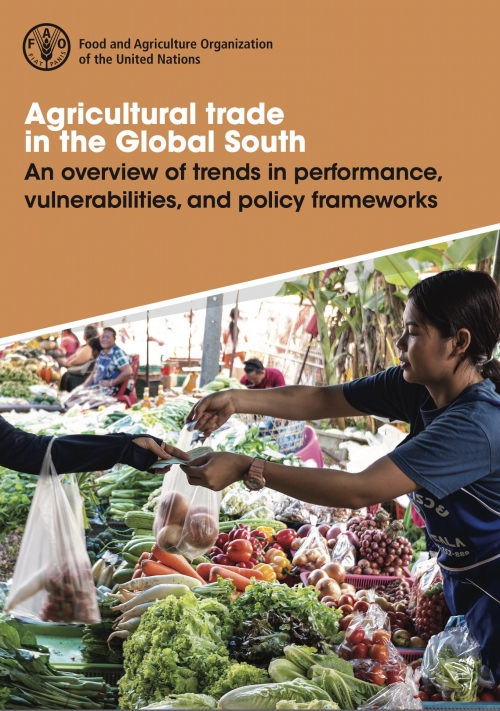
Agricultural trade in the Global South – An overview of trends in performance, vulnerabilities, and policy frameworks
01/03/2022
South-South Cooperation (SSC) is increasingly recognized as an effective instrument for catalyzing economic development by fostering the exchange of innovation and good practices, and expanding market opportunities across countries with a similar level of development and shared development objectives, such as those reflected in the Sustainable Development Goals (SDGs). Key to this economic cooperation are trade and investment relationships among South countries.
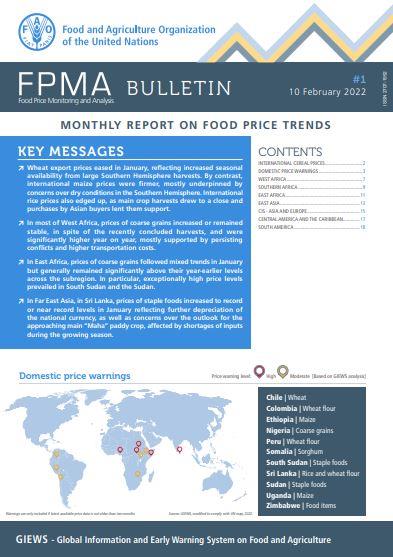
Food Price Monitoring and Analysis (FPMA) Bulletin #1, 10 February 2022
10/02/2022
Wheat export prices eased in January, reflecting increased seasonal availability from large Southern Hemisphere harvests. By contrast, international maize prices were firmer, mostly underpinned by concerns over dry conditions in the Southern Hemisphere. International rice prices also edged up, as main crop harvests drew to a close and purchases by Asian buyers lent them support. In most of West Africa, prices of coarse grains increased or remained stable, in spite of the recently concluded harvests, and were significantly higher year on year, mostly supported by persisting conflicts and higher transportation costs. In East Africa, prices of coarse grains followed mixed trends in January but generally remained significantly above their year-earlier levels across the subregion. In particular, exceptionally high price levels prevailed in South Sudan and the Sudan. In Far East Asia, in Sri Lanka, prices of staple foods increased to record or near record levels in January reflecting further depreciation of the national currency, as well as concerns over the outlook for the approaching main “Maha” paddy crop, affected by shortages of inputs during the growing season.
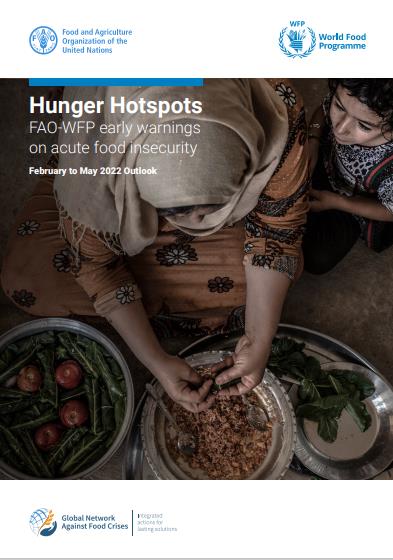
Hunger Hotspots - FAO-WFP early warnings on acute food insecurity: February to May 2022 Outlook
27/01/2022
Acute food insecurity is likely to deteriorate further in 20 countries or situations – hunger hotspots – in the next months. Organized violence or conflict remain the primary drivers, followed by weather extremes and climate variability. The COVID-19 pandemic continues to disrupt economies. High food prices and low household purchasing power are major economic concerns for food insecurity rising. The report provides country-specific recommendations on priorities for emergency response and anticipatory action to address existing humanitarian needs and ensure short-term protective interventions before new needs materialize.
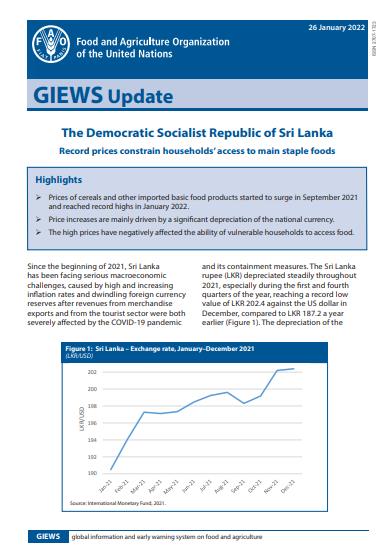
GIEWS Update - The Democratic Socialist Republic of Sri Lanka, 26 January 2022
26/01/2022
Prices of cereals and other imported basic food products started to surge in September 2021 and reached record highs in January 2022. Price increases are mainly driven by a significant depreciation of the national currency. The high prices have negatively affected the ability of vulnerable households to access food.
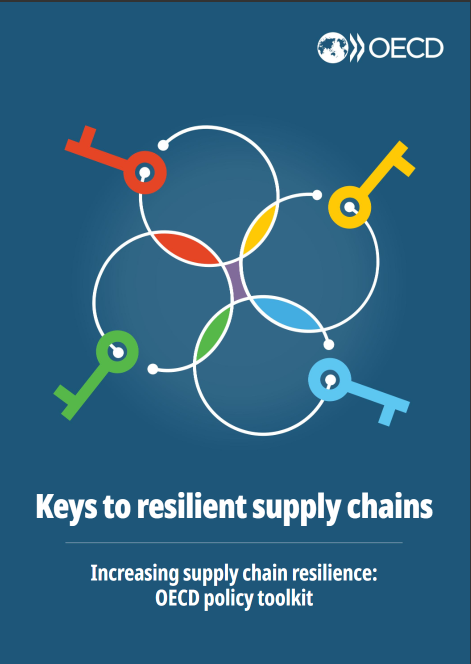
OECD | Keys to resilient supply chains. Policy tools for preparedness and responsiveness
01/01/2022
The intricate networks of international flows of goods, services, capital, and technology that make up global supply chains are currently facing substantial challenges arising from geopolitical complexities and the impacts of climate change.
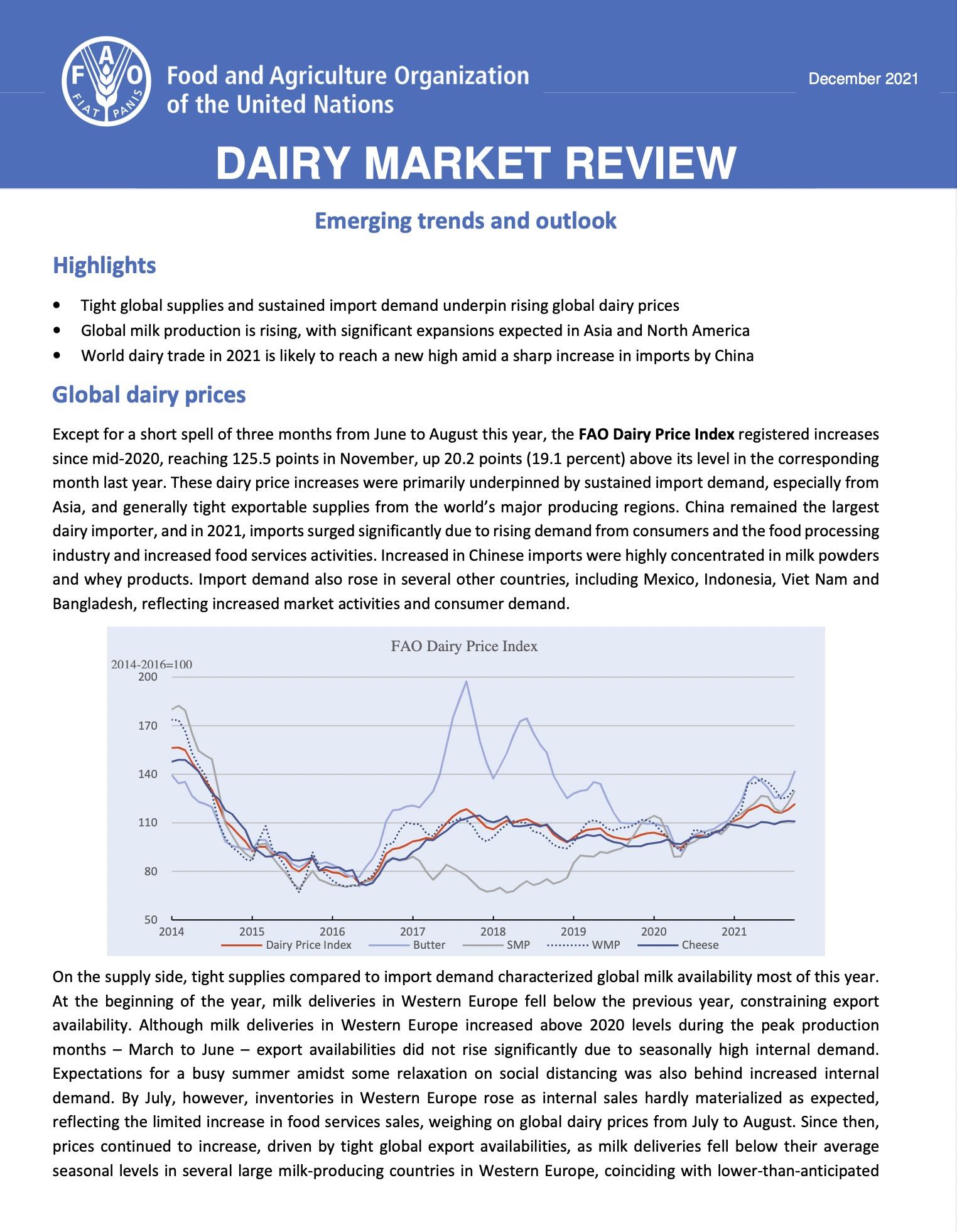
Dairy Market Review - Emerging trends and outlook - December 2021
29/12/2021
The December issue of the Dairy Market Review presents emerging trends and outlook of international meat prices, global meat production and trade in meat products. Tight global supplies and sustained import demand underpin rising global dairy prices. Global milk production is rising, with significant expansions expected in Asia and North America. World dairy trade in 2021 is likely to reach a new high amid a sharp increase in imports by China.
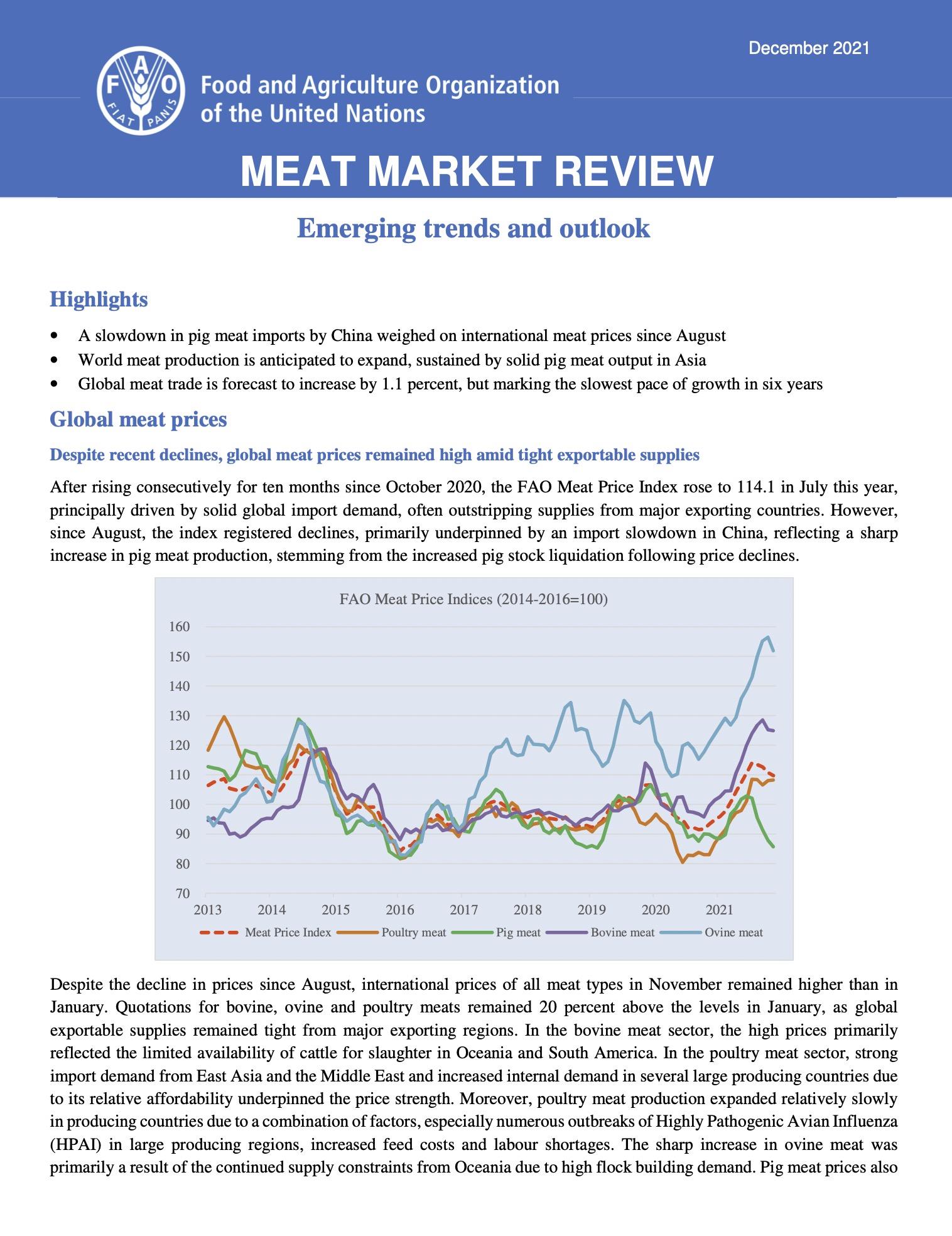
Meat Market Review: Emerging trends and outlook, December 2021
16/12/2021
The December issue of the Meat Market Review presents emerging trends and outlook of international meat prices, global meat production and trade in meat products. After rising consecutively for ten months since October 2020, the FAO Meat Price Index rose to 114.1 points in July this year, driven by solid global import demand outstripping supplies from major exporting countries. However, a slowdown in pig meat imports by China weighed on international meat prices since August. World meat production in 2021 is anticipated to expand, sustained by increased pig meat output in Asia. Global meat trade is forecast to increase by 1.1 percent, but marking the slowest pace of growth in six years.
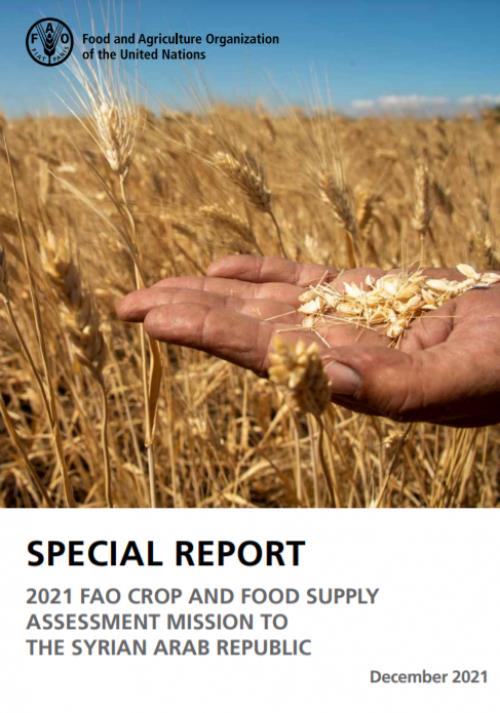
Special Report - 2021 FAO Crop and Food Supply Assessment Mission to the Syrian Arab Republic
14/12/2021
Erratic weather conditions across most of the Syrian regions, especially in the main cereal producing areas of the country in 2021 raised the need for an assessment based on well-established and recognized criteria to produce crop estimates comparable with previous assessments. In response to the request by the Government of the Syrian Arab Republic to conduct an analysis of the agricultural production in the 2020/21 crop season, in light of critical weather conditions, difficult economic environment exacerbated by other challenges, the FAO carried out an independent Crop and Food Supply Assessment Mission (CFSAM) to estimate the 2021 cereal production, to assess the overall situation of the agricultural sector and to gauge prospects for the upcoming 2021/22 season. Given the travel restrictions, the mission relied on the network of resilience officers employed by the FAO Country Office that have detailed knowledge of local agricultural conditions and agro-ecological zones based across the different governorates. The field information collection took place between June and July 2021. Information was also provided by the Ministry of Agriculture and Agrarian Reform (MAAR) and several other relevant ministries and state bodies as well as by provincial departments of agriculture.
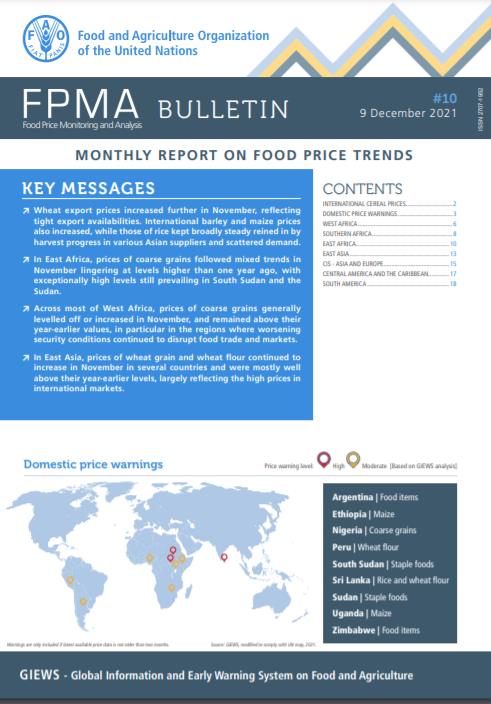
Food Price Monitoring and Analysis (FPMA) Bulletin #10, 9 December 2021
09/12/2021
Wheat export prices increased further in November, reflecting tight export availabilities. International barley and maize prices also increased, while those of rice kept broadly steady reined in by harvest progress in various Asian suppliers and scattered demand. In East Africa, prices of coarse grains followed mixed trends in November lingering at levels higher than one year ago, with exceptionally high levels still prevailing in South Sudan and the Sudan. Across most of West Africa, prices of coarse grains generally levelled off or increased in November, and remained above their year-earlier values, in particular in the regions where worsening security conditions continued to disrupt food trade and markets. In East Asia, prices of wheat grain and wheat flour continued to increase in November in several countries and were mostly well above their year-earlier levels, largely reflecting the high prices in international markets.

OECD-FAO Practical Business Tool on Deforestation, Forest Degradation and Due Diligence in Agricultural Supply Chains
03/12/2021
This flyer introduces the OECD-FAO Practical Business Tool on Deforestation, Forest Degradation and Due Diligence in Agricultural Supply Chains. The tool builds on the recommendations of the OECD-FAO Guidance for Responsible Agricultural Supply Chains and explains how businesses can implement its 5-step framework for risk-based due diligence to identify and mitigate deforestation and forest degradation impacts in agricultural supply chains.
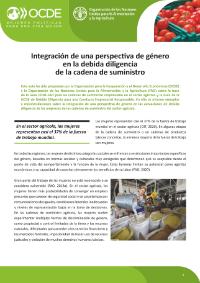
Integrating a gender perspective into supply chain due diligence
02/12/2021
The enterprise policy note on Integrating a gender perspective into supply chain due diligence is based on the OECD-FAO Guidance for Responsible Agricultural Supply Chains and presents how companies can integrate a gender perspective into due diligence actions. It provides practical examples of how companies operating in agricultural supply chains can tailor their responsible sourcing and risk-based due diligence efforts to support better development outcomes for women and girls. The policy note also helps companies understand how their due diligence efforts can contribute to implementing Sustainable Development Goal 5: Achieve gender equality and empowering all women and girls when considering gender impacts and business relationships with suppliers in agricultural supply chains.
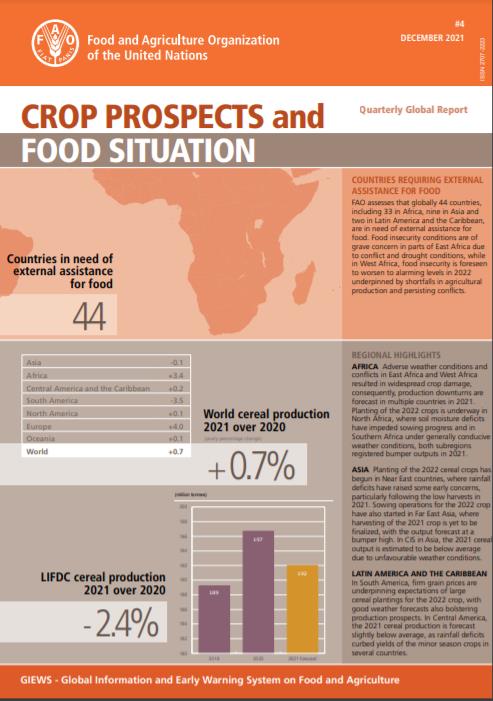
Crop Prospects and Food Situation - Quarterly Global Report, No. 4, December 2021
02/12/2021
FAO assesses that globally 44 countries, including 33 in Africa, nine in Asia and two in Latin America and the Caribbean, are in need of external assistance for food. Food insecurity conditions are of grave concern in parts of East Africa due to conflict and drought conditions, while in West Africa, food insecurity is foreseen to worsen to alarming levels in 2022 underpinned by shortfalls in agricultural production and persisting conflicts.
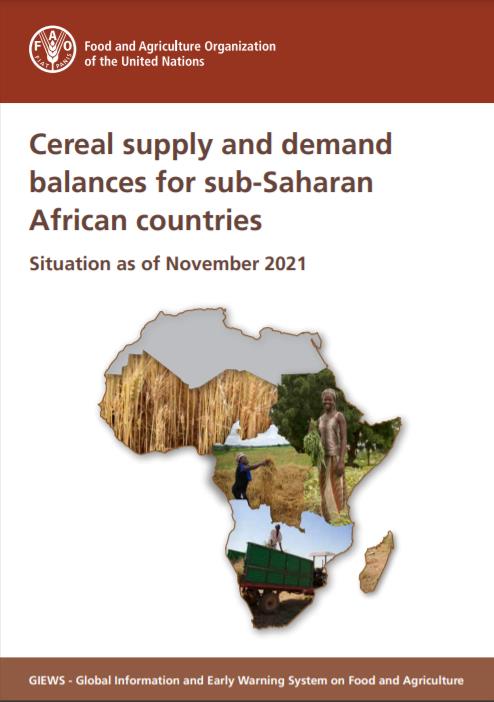
Cereal supply and demand balance for sub-Saharan African countries - No.4, December 2021
02/12/2021
This statistical report contains a subset of CCBS data and presents updated cereal supply and demand balances for all sub-Saharan African countries. It complements the information of the FAO/GIEWS Crop Prospects and Food Situation report and is published four times a year with the same schedule. This report is based on information available as of November 2021.



